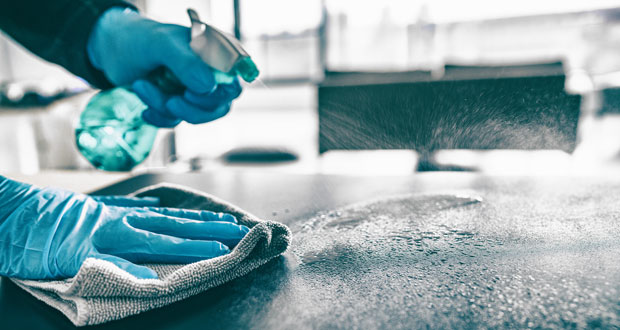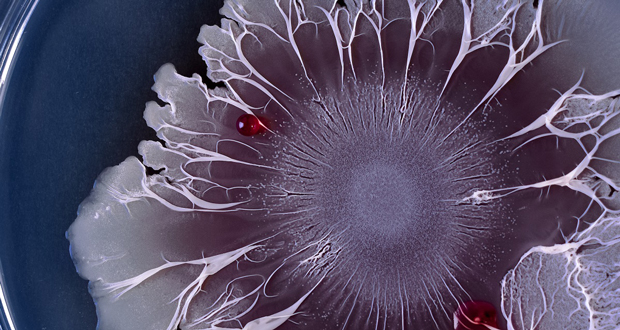By Dave Rudge, Operations Manager at REACT Specialist Cleaning
Most people will live their lives completely unaware of biofilms – the free-floating communities of pathogens that stick to the surfaces in our surroundings. But these biofilms present a real risk to us humans. Once attached to surfaces, they embed themselves in a slimy substance formed of DNA, polysaccharides, and proteins. This substance can protect them from traditional cleaning products, which might otherwise kill the pathogens inside.
Biofilms can be found in most untreated homes, workplaces, and public spaces. And to be clear here, they’re not all bad. In some cases, they’ve even proven useful in the treatment of waste. Uncontrolled though, they can provide safe havens for bacteria and viruses, like the Coronavirus that caused the recent pandemic. They can also damage the surfaces that they adhere to. Cleaning specialists must develop effective strategies to prevent and destroy them.
An effective form of treatment
To treat biofilms, cleaning specialists need to consider innovative products. The predominant, and most effective form of these products, is ‘barrier technology’. Barrier technology, or simply ‘barrier tech’, aims to either prevent biofilms from adhering to surfaces in the first place, or to destroy biofilms that land on them. The former involves an anti-microbial coating containing biocides, copper, or silver. The latter involves creating an entirely new surface that destroys colonising biofilms.
These technologies are growing in popularity as a result of the growing recognition of biofilms’ harm, as well as their success in treating them. In 2022, Grand View Research valued the antimicrobial coatings market at $10b (£8.11b). In many cases, barrier tech has been in use in healthcare environments for years. But it’s now time that cleaning specialists consider using them outside hospitals too.
Diverse range of products
Barrier tech is more of a concept than a single product. And that concept manifests itself in a range of ways. Ultimately, it aims to prevent or destroy biofilms. The appropriate method of doing so will depend on your specific needs.
Some barrier tech products are similar to normal cleaning products. Jango’s ‘ntrl’ range, for example, includes washroom and multi-surface cleaners that contain probiotics. You might wonder how probiotics could help when we’re trying to kill bacteria. But Jango’s products actively encourage colonisation by bacteria – unharmful bacteria, that then prevents biofilms from attaching to the surface. REACT uses this range a lot itself.
There are also so-called ‘sealants’. These can provide long-term protection from biofilms by sealing a surface with a chemical like silicon dioxide for up to six months, preventing biofilms from adhering to it. Citrox’s Protect Hard Surface Sealant is a good example of this product. It is touch-dry within minutes, and is fully effective within 24 hours.
Other products are designed for specific surfaces and touch points. The Decontaminator’s ‘FTP Wraps n’ Pads’, for example, wrap around door handles and other similar frequent-touch points. They contain zinc pyrithione, which can protect the surface for up to three years from bacteria, viruses, fungi, and other parasites.

Extra advice for treating biofilms
Barrier tech isn’t perfect. In some cases, it requires frequent application. And biofilms can get past it in some ways – by building protective layers of dead cells that prevent the chemicals from acting on them. Barrier tech can also struggle to provide an all-encompassing layer on soft, porous surfaces. Regulators need to catch up with innovation in the sector to introduce standardised procedures that can certify barrier technologies. At the moment, manufacturers are doing this independently.
Nevertheless, as I’ve explained, barrier tech is the best current method of treatment for biofilms. There will be a lot more innovation in the sector over the coming decade, which may see new and innovative products enter the shelves. For cleaning specialists, there are a few tricks that will help them tackle biofilms, whatever product they use:
-
Evidence-based treatment: When choosing a product, make sure that it is supported by at least some scientific research. Independent research, if possible. There are also proven industry certifications that can help you make the decision.
-
Follow instructions: It may sound simple, but many barrier technologies require unusual methods of application, even though they look like traditional cleaning products. These instructions might help you avoid damaging the application surface, as well as applying it effectively.
- Follow standard guidelines: Standard guidelines for cleaning products still apply. Always follow the path of ‘clean to dirty’. Clear debris and dust from surfaces before application. And follow colour-coding guidelines. This will help you prevent cross contamination.
In the wake of the Coronavirus pandemic, cleaning specialists need to take biofilms seriously. Using the tips I’ve described, effective treatment is not only possible, but can be easy too. As always, update yourself with the latest research, and train your operatives in effective use to keep public spaces and workplaces clean and hygienic.





